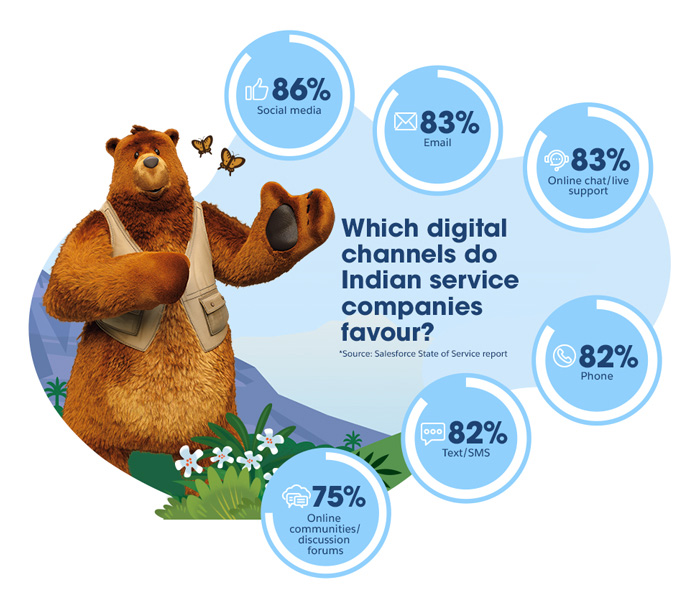In an age where products can be replicated within 24 hours, exceptional customer service stands out as a true business differentiator. Customers are demanding speedy, efficient digital interactions that meet their service requirements and enable a consistent, customised experience. The benefits are two-pronged:
- Efficient digital customer service leads to faster resolution of issues and enables personalised responses at scale. This increases customer satisfaction.
- Shifting to digital also reduces employee effort. Chatbots help reduce load on agents, who can also use automated workflows to easily respond to multiple customers at the same time. This lets them focus on high-value tasks and increase their productivity.
The fifth edition of Salesforce’s State of the Service report highlights the growing importance of digital-first customer service in driving efficient business growth across business cycles. The report surveyed 8000+ respondents from 36 countries, of which 300+ are from India. It explored the growing engagement on newer digital channels - such as social media and apps- along with traditional channels such as email and phone.

Choosing the right customer service channel to meet customer expectations
While it is true that digital channels help businesses meet the customer where they are, each digital channel has its own pros and cons. Organisations must address these to provide exceptional, cost-effective customer service.
Here are some of the pros and cons of the most popular digital service channels:
1. Social media
Challenges: Customers expect instant resolution. Virality factor could prove to be harmful as negative feedback from customers can affect the brand's reputation.
2. Email
Challenges: Without a CRM-enabled email system, tracking the status of service requests and responding in a structured manner can be challenging.
3. Online chat/live support
Challenges: Agents need real-time cross-functional data to provide relevant responses quickly.
4. Phone calls
Challenges: Manpower constraints, language barriers, longer wait times than expected, and lack of scalability.
5. Messaging platforms like SMS / Whatsapp
Challenges: Expensive and only allows one-way interaction. Messages can be seen as spam by customers unless interaction was initiated by them.
6. Online communities
Challenges: Lack of individualised responses to unique issues. Excessive moderation by the company can change the neutral, unbiased nature of the platform.
How to remain efficient without spreading yourself too thin on digital platforms?
One of the main challenges with an omnichannel approach is that companies might focus on being present on as many channels as possible. Using different systems for each channel could lead to confusion, cost overruns, and poor quality of service. Support agents also end up switching between multiple platforms to close service tickets. Moreover, poor visibility across service channels and a lack of transparency can lead to a fragmented customer journey.
Instead, imagine having a single, unified service console into which all your tickets and cases come in. One that offers a single, shared view of customer interactions across all channels. That’s Salesforce Service Cloud, a unified, trusted platform that builds a 360-degree view of the customer by combining data from numerous consumer touchpoints. And makes it available to support teams in a single location so they can tailor interactions and provide satisfactory resolutions from the get-go.





